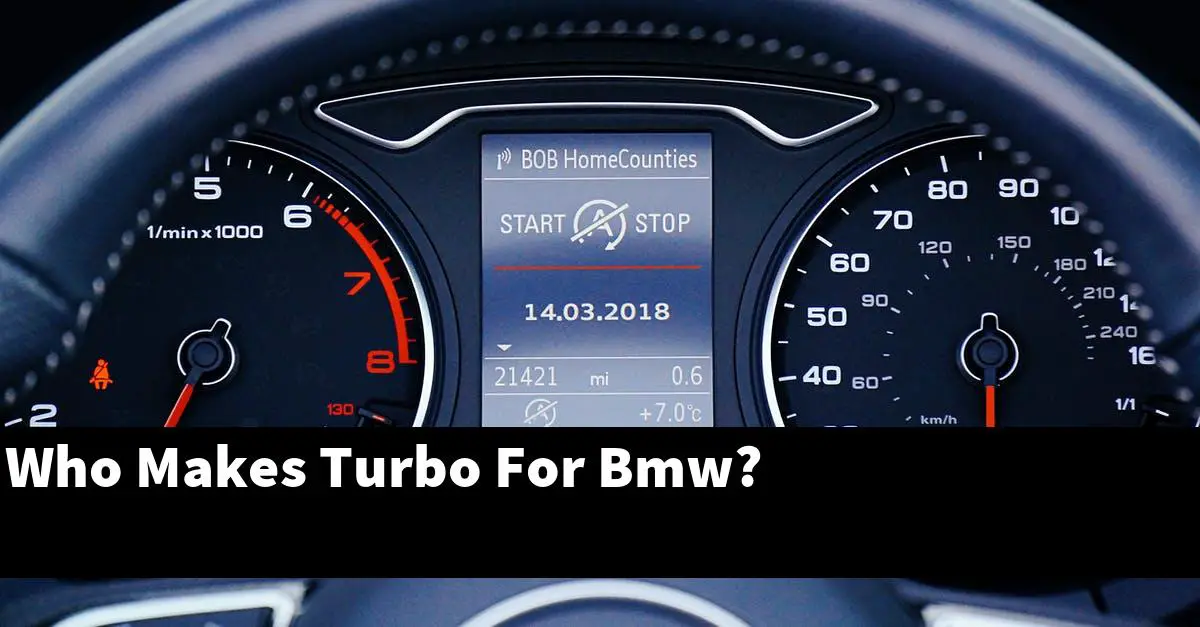Turbochargers are devices that are used to increase the power output of an internal combustion engine by compressing the air that enters the engine. Turbochargers were first used in aircraft engines in the early 1900s, and they were later introduced to diesel and gasoline engines in the 1970s. BMW is a German automaker that produces a wide range of vehicles, including turbocharged models.
BMW has been using turbochargers in its vehicles since the 1980s, and the company offers a wide variety of turbocharged engines in its current lineup.
Who makes BMW twinpower turbo?
BMW TwinPower Turbo is a production engine development program for the BMW Group. BMW TwinPower Turbo is a two-litre, four-cylinder turbocharged gasoline engine with a indirect injection system.
The engine is manufactured by the BMW Group’s engine production facilities in Munich, Germany and Greer, South Carolina.
BMW TwinPower Turbo is the result of a collaboration between the BMW Group’s engine production facilities in Munich and Greer and the engine development departments of both companies. The engine is a two-litre, four-cylinder turbocharged gasoline engine with a indirect injection system.
The engine is manufactured by the BMW Group’s engine production facilities in Munich, Germany and Greer, South Carolina. The engine is a two-litre, four-cylinder turbocharged gasoline engine with a indirect injection system.
The engine is manufactured by the BMW Group’s engine production facilities in Munich, Germany and Greer, South Carolina. The engine is designed to provide improved fuel economy and performance in a variety of BMW passenger cars.
The engine is manufactured by the BMW Group’s engine production facilities in Munich, Germany and Greer, South Carolina. The engine is designed to provide improved fuel economy and performance in a variety of BMW passenger cars.
The engine is manufactured by the BMW Group’s engine production facilities in Munich, Germany and Greer, South Carolina. The engine is designed to provide improved fuel economy and performance in a variety of BMW passenger cars.
What turbo does BMW use?
Turbochargers are most commonly used in car engines to increase power. Turbochargers are essentially an engine component that uses exhaust gas from the engine to spin a turbine, which in turn creates more power.
This is done by taking the exhaust from the engine and directing it into a turbine. This turbine then uses the energy from the exhaust to create more power, which can then be put back into the engine to help it run more efficiently.
There are a number of different types of turbochargers, but the most common is the turbocharger belt drive. This type of turbocharger uses a belt to spin the turbine.
This belt can be made of a number of different materials, but the most common is rubber. This belt is connected to the engine and the turbine.
The belt then spins the turbine, which in turn creates more power.
The main advantage of using a turbocharger is that it can create a lot of extra power. This is especially useful in high-performance cars.
Turbochargers also have a number of other advantages, including the fact that they can improve fuel efficiency.
Are BMW turbos reliable?
BMW turbos are often considered to be reliable and effective performance engines. Many BMW owners report that their turbos have performed flawlessly in the past, and they have never experienced any issues with them.
However, there are always a few people who report that their turbos have failed on them. While this may be the occasional occurrence, it is not the norm and most BMW turbos are considered to be reliable engines.
Who makes n54 turbos?
There are many companies that make turbochargers for passenger cars and trucks. The most popular companies are Bosch, BorgWarner, Eaton, Garrett, and Mahle.
Conclusion
Turbocharged engines are produced by several manufacturers, including BMW. In general, turbochargers are designed to improve engine power and efficiency by forcing more air into the combustion chamber.


